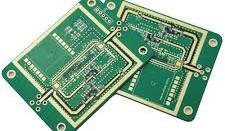The rapid evolution of the automotive industry is being driven by advanced electronics, particularly in the areas of radar systems and Advanced Driver-Assistance Systems (ADAS). From collision avoidance to lane-keeping assistance, these technologies rely on high-speed data transmission and signal accuracy. At the core of these innovations are specialized circuit boards that can handle high frequencies with precision and reliability.
Why Automotive Radar and ADAS Depend on High Frequency PCBs
Modern vehicles are equipped with radar modules that operate within millimeter-wave frequencies (typically 24 GHz to 77 GHz). These frequencies allow sensors to detect objects at various distances and provide accurate information to support ADAS features such as adaptive cruise control, blind-spot detection, and emergency braking.
Traditional circuit boards cannot support the demands of these high-speed signals due to limitations in dielectric properties and signal loss. That’s where advanced RF PCBs and microwave PCBs come into play. They are engineered to minimize signal attenuation, support wide bandwidths, and withstand harsh automotive environments.
In essence, the performance and safety of ADAS technologies heavily depend on the quality and reliability of the printed circuit boards used in radar systems.
Materials and Design Considerations
When designing boards for automotive radar applications, material selection is critical. High-performance laminates such as PTFE (Teflon), Rogers, and ceramic-filled substrates are often used to ensure low dielectric loss and consistent performance across wide frequency ranges.
Key considerations include:
- Low dielectric constant (Dk): Ensures signal integrity at high frequencies.
- Low dissipation factor (Df): Minimizes energy loss during transmission.
- Thermal stability: Withstands the high temperatures of automotive environments.
- Dimensional stability: Prevents warping under thermal cycling.
Designers must also carefully plan trace geometry, grounding, and impedance control to maintain high signal fidelity. These factors are crucial in ensuring that radar and ADAS systems can function accurately without interference.
Challenges in Manufacturing
Producing RF and microwave PCBs for automotive applications is not without challenges. Precise etching tolerances, plating uniformity, and multilayer stack-ups require advanced fabrication techniques. Additionally, manufacturers must ensure strict quality control to meet automotive reliability standards such as ISO/TS 16949.
Another challenge is balancing performance with cost. High-frequency materials are more expensive than traditional FR-4 laminates, so manufacturers must optimize design and fabrication processes to provide cost-effective solutions without compromising performance.
The Role of Specialized Manufacturing Services
This is where High Frequency PCB Manufacturing Services become essential. These services provide not only fabrication but also design consultation, material selection guidance, and testing support. By leveraging expertise in RF and microwave technologies, manufacturers can deliver boards that meet the stringent requirements of automotive radar and ADAS applications.
From controlled impedance testing to thermal management solutions, specialized services ensure that PCBs are capable of withstanding both the electrical and environmental challenges posed by automotive use cases.
Applications in ADAS and Radar
High-frequency boards enable multiple ADAS features that are now standard or becoming increasingly common in modern vehicles:
- Collision avoidance systems that rely on radar to detect obstacles.
- Adaptive cruise control that maintains safe distances from other vehicles.
- Blind-spot monitoring that alerts drivers of nearby cars in adjacent lanes.
- Parking assistance systems that use radar sensors for precise maneuvering.
As vehicles move closer toward full autonomy, the demand for high-performance radar modules—and by extension, high-frequency PCBs—will continue to rise.
Future Outlook
The future of automotive electronics lies in the seamless integration of sensors, communication modules, and computing systems. With the growth of electric vehicles (EVs) and connected car technologies, the importance of reliable high-frequency PCBs is only expected to increase.
Emerging technologies like 5G connectivity and vehicle-to-everything (V2X) communication will further require advanced PCB designs capable of supporting ultra-high-frequency signals and real-time data transmission.
For automakers, partnering with experienced providers of High Frequency PCB Manufacturing Services will be key to ensuring their vehicles remain at the forefront of innovation and safety.
Conclusion
Automotive radar and ADAS technologies are reshaping the driving experience by enhancing safety, comfort, and performance. Behind these advancements are specialized circuit boards designed to handle the challenges of high-frequency signals. By combining advanced materials, precision manufacturing, and rigorous quality standards, high-frequency PCBs are enabling the next generation of smart and autonomous vehicles.
As demand for radar and ADAS continues to grow, manufacturers and automotive companies alike will rely on expert PCB partners to deliver solutions that meet the needs of high-speed, high-reliability automotive electronics.
